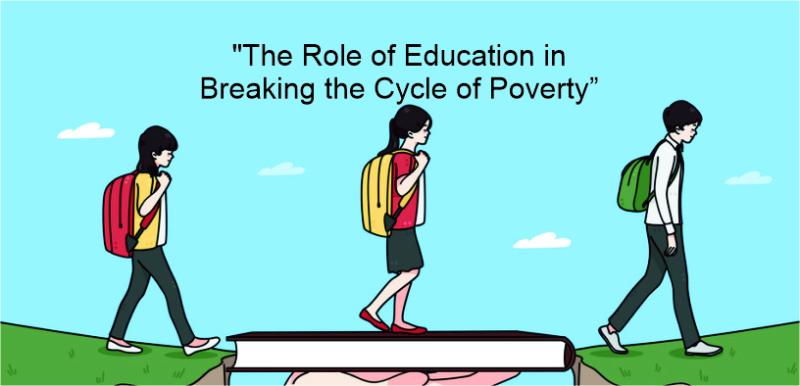Breaking the Cycle of Poverty in India: Solutions for Sustainable Change

In India, poverty remains a persistent issue that impacts millions, limiting social mobility and stalling economic progress. Despite advancements, many communities still face barriers in accessing essential resources, education, and healthcare. Breaking this cycle requires a multifaceted approach that targets the root causes of poverty, builds on community strengths, and promotes sustainable solutions. Here’s a comprehensive look at how we can drive change and empower communities toward a better future.
1. Understanding the Root Causes of Poverty
Poverty in India is influenced by various interconnected factors, including overpopulation, unemployment, illiteracy, limited healthcare access, and inadequate social services. For many, poverty is generational, creating a cycle that's difficult to escape. Effective solutions must address these core issues by providing access to essential services, empowering individuals through education, and creating stable employment opportunities.
2. Education as a Powerful Tool for Change
Quality education is a proven method to break the cycle of poverty. When children from disadvantaged backgrounds receive education, they gain the skills needed to pursue stable, well-paying jobs, which can uplift entire families.
Accessible Education: Free or subsidized education initiatives make education attainable for low-income families. Programs providing holistic educational support, including access to books, uniforms, and school meals, help ensure students are ready to learn and succeed.
Skills Development: In addition to formal education, vocational training programs prepare youth for the workforce, especially in high-demand sectors. Technical training, language proficiency, and job-specific skills make young adults more employable and economically resilient.
3. Healthcare Initiatives: Building a Foundation for Well-being
Health challenges are both a cause and a result of poverty. Limited access to healthcare can exacerbate financial strain on families, trapping them in a cycle of medical debt and lost productivity. Sustainable solutions must address healthcare access, particularly in rural and underserved urban areas.
Primary Healthcare Access: Affordable, accessible healthcare centers that provide preventive care, vaccinations, and maternal health services can drastically improve quality of life.
Nutrition Programs: Nutritional support, especially for children, enhances cognitive development and overall health, enabling students to perform better academically and contribute positively to society.
4. Economic Empowerment and Job Creation
Sustainable change depends on creating reliable employment opportunities. By empowering individuals with job skills, facilitating access to financial resources, and supporting entrepreneurship, communities can achieve economic self-sufficiency.
Microfinance Initiatives: Microfinance enables individuals, particularly women, to launch or expand small businesses, fostering economic growth within their communities.
Women’s Empowerment Programs: Empowering women has a ripple effect on community welfare. Programs that provide financial literacy, business training, and leadership skills help women support their families and contribute to local economies.
5. Investing in Sustainable Infrastructure
For poverty reduction efforts to be effective, communities need access to essential infrastructure that supports their social and economic activities. Clean water, sanitation, electricity, and transportation improve living standards and create opportunities.
Water and Sanitation Access: Providing clean water and adequate sanitation facilities reduces health risks, boosts productivity, and enhances quality of life.
Affordable Housing Initiatives: Secure, affordable housing allows families to focus on other priorities, such as education and income generation, without the constant instability of inadequate shelter.
6. Community-Led Social Programs
Poverty alleviation is most effective when it addresses the unique needs of marginalized groups. Community-driven programs that involve local participation in planning and implementation are particularly impactful.
Child Development Programs: Programs that focus on child health, nutrition, and education ensure that children from low-income families receive the resources they need to succeed and avoid the poverty trap.
Community-Based Empowerment: By encouraging community ownership of projects, beneficiaries develop a sense of responsibility and commitment, ensuring long-term sustainability and growth.
Conclusion: Building a Path to Sustainable Progress
Breaking the poverty cycle in India is a long-term commitment that requires coordinated action across multiple sectors. Education, healthcare, economic empowerment, and infrastructure all play critical roles in uplifting communities and providing them with the tools needed for sustainable development. Collaboration efforts from government bodies, NGOs, and individuals can pave the way toward a society where every individual has the opportunity to rise above poverty, contributing to a more equitable and prosperous future.
Post Your Ad Here
Comments